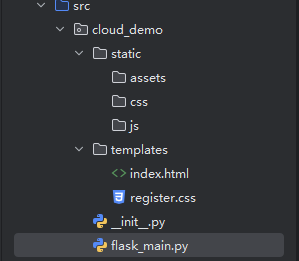前端 html页面中各个元素介绍 head、body
HTML 文档中,<head> 和 <body> 是两个主要的部分
<head> 元素
-
作用:包含文档的元数据(metadata),不会直接显示在页面中
-
包含内容:
-
文档标题 (
<title>) -
字符集声明 (
<meta charset="utf-8">) -
视口设置 (
<meta name="viewport">) -
样式表链接 (
<link rel="stylesheet">) -
JavaScript 文件链接 (
<script src="">) -
网站图标 (
<link rel="icon">) -
SEO 相关的元数据 (
<meta name="description">等) -
其他不会直接显示的信息
-
<body> 元素
-
作用:包含所有在浏览器中可见的内容
-
包含内容:
-
文本内容
-
图片 (
<img>) -
链接 (
<a>) -
表格 (
<table>) -
列表 (
<ul>,<ol>) -
表单 (
<form>) -
多媒体内容
-
所有用户可见的 HTML 元素
-
区别:
可见性:head 内容不可见(除了 title,title在浏览器框上可见),body 内容可见
功能:head 用于定义文档属性和资源,body 用于定义文档内容
html页面中的常用关键字:
一、文档结构关键字
-
<!DOCTYPE html>- 声明文档类型为HTML5 -
<html>- HTML文档的根元素 -
<head>- 包含文档的元数据(metadata) -
<title>- 定义浏览器标签页标题 -
<meta>- 提供文档的元数据(如字符集、视口设置等) -
<body>- 包含文档的可见内容
二、内容与排版标签
文本相关
-
<h1>到<h6>- 定义标题(1级到6级) -
<p>- 定义段落 -
<span>- 行内文本容器(无语义) -
<div>- 块级容器(无语义) -
<br>- 插入换行符 -
<hr>- 创建水平分隔线 -
<strong>- 表示重要文本(默认加粗) -
<em>- 表示强调文本(默认斜体) -
<u>- 定义下划线文本 -
<del>- 定义删除文本 -
<sup>- 上标文本 -
<sub>- 下标文本
多媒体
-
<img>- 嵌入图像
-
src- 图像URL -
alt- 替代文本 -
width/height- 尺寸
-
<video>- 嵌入视频 -
<audio>- 嵌入音频 -
<iframe>- 嵌入另一个HTML页面
三、链接与导航
-
<a>- 创建超链接
-
href- 链接目标URL -
target- 打开方式(_blank为新窗口)
-
<nav>- 定义导航链接区域
四、列表
-
<ul>- 无序列表 -
<ol>- 有序列表 -
<li>- 列表项 -
<dl>- 定义列表 -
<dt>- 定义术语 -
<dd>- 定义描述
五、表格
-
<table>- 定义表格 -
<tr>- 表格行 -
<th>- 表头单元格 -
<td>- 表格数据单元格 -
<caption>- 表格标题 -
<thead>/<tbody>/<tfoot>- 表格分区
六、表单元素
-
<form>- 定义表单容器
-
action- 提交地址 -
method- 提交方法(GET/POST)
-
<input>- 输入控件
-
type- 类型(text,password,email,number,checkbox,radio等) -
name- 字段名称 -
value- 默认值 -
placeholder- 占位文本 -
required- 必填项
-
<textarea>- 多行文本输入 -
<select>- 下拉选择框 -
<option>- 下拉选项 -
<button>- 可点击按钮 -
<label>- 表单标签(与输入关联) -
<fieldset>- 表单分组 -
<legend>- 分组标题
七、语义化标签(HTML5)
-
<header>- 页眉/区块头 -
<footer>- 页脚/区块尾 -
<article>- 独立内容块 -
<section>- 文档章节 -
<aside>- 侧边栏/附属内容 -
<main>- 文档主要内容 -
<figure>- 独立内容(如图像) -
<figcaption>- 图/表标题 -
<time>- 日期/时间
八、元数据与资源
-
<link>- 链接外部资源
-
rel="stylesheet"- CSS样式表 -
rel="icon"- 网站图标
-
<script>- 嵌入或引用JavaScript
-
src- 脚本URL -
async/defer- 加载方式
-
<style>- 内嵌CSS样式 -
<meta charset="UTF-8">- 字符编码声明 -
<meta name="viewport" content="width=device-width, initial-scale=1.0">- 移动端视口设置
九、全局属性
-
id- 元素唯一标识 -
class- 元素类名(用于CSS/JS选择) -
style- 内联样式 -
title- 额外信息(工具提示) -
data-*- 自定义数据属性 -
hidden- 隐藏元素 -
lang- 语言定义
案例:

前端html页面:
<!DOCTYPE html> <html lang="zh-CN"> <head> <meta charset="UTF-8"> <meta name="viewport" content="width=device-width, initial-scale=1.0"> <title>大模型交互界面</title> <link rel="stylesheet" href="{{ url_for('static', filename='style.css') }}"> <style> body { font-family: 'Arial', sans-serif; line-height: 1.6; margin: 0; padding: 20px; background-color: #f5f5f5; color: #333; } .container { max-width: 800px; margin: 0 auto; background: white; padding: 20px; border-radius: 8px; box-shadow: 0 2px 10px rgba(0, 0, 0, 0.1); } h1 { text-align: center; color: #2c3e50; } .input-section { margin-bottom: 20px; } textarea { width: 100%; padding: 10px; border: 1px solid #ddd; border-radius: 4px; min-height: 100px; resize: vertical; font-size: 16px; } button { background-color: #3498db; color: white; border: none; padding: 10px 20px; border-radius: 4px; cursor: pointer; font-size: 16px; margin-top: 10px; } button:hover { background-color: #2980b9; } button:disabled { background-color: #95a5a6; cursor: not-allowed; } .output-section { margin-top: 20px; padding: 15px; border: 1px solid #ddd; border-radius: 4px; min-height: 150px; background-color: #f9f9f9; } .loading { color: #7f8c8d; font-style: italic; } .error { color: #e74c3c; } </style> </head> <body> <div class="container"> <h1>大模型交互界面</h1> <div class="input-section"> <textarea id="userInput" placeholder="请输入您的问题或指令..."></textarea> <button id="submitBtn">生成响应</button> </div> <div class="output-section" id="output"> <p>大模型的响应将显示在这里...</p> </div> </div> <script> document.addEventListener('DOMContentLoaded', function() { const submitBtn = document.getElementById('submitBtn'); const userInput = document.getElementById('userInput'); const outputDiv = document.getElementById('output'); submitBtn.addEventListener('click', async function() { const inputText = userInput.value.trim(); if (!inputText) { outputDiv.innerHTML = '<p class="error">请输入有效内容</p>'; return; } // 禁用按钮,防止重复提交 submitBtn.disabled = true; outputDiv.innerHTML = '<p class="loading">大模型正在思考,请稍候...</p>'; try { const response = await fetch('/api/generate', { method: 'POST', headers: { 'Content-Type': 'application/json', }, body: JSON.stringify({ input: inputText }) }); if (!response.ok) { throw new Error('网络响应不正常'); } const data = await response.json(); outputDiv.innerHTML = `<p>${data.response}</p>`; } catch (error) { outputDiv.innerHTML = `<p class="error">发生错误: ${error.message}</p>`; } finally { submitBtn.disabled = false; } }); // 允许按Enter键提交(Shift+Enter换行) userInput.addEventListener('keydown', function(e) { if (e.key === 'Enter' && !e.shiftKey) { e.preventDefault(); submitBtn.click(); } }); }); </script> </body> </html>
后端flask应用:
from flask import Flask, render_template, request, jsonify import time # 用于模拟处理延迟 app = Flask(__name__) # 静态模板渲染 @app.route('/') def home(): return render_template('index2.html') @app.route('/api/generate', methods=['POST']) def generate_response(): data = request.json user_input = data.get('input', '') # 这里应该是调用大模型生成响应的逻辑 # 为了演示,我们模拟一个简单的响应和延迟 time.sleep(1) # 模拟处理时间 # 模拟大模型响应 response = f"这是大模型对您输入 '{user_input}' 的响应。在实际应用中,这里会是大模型生成的文本。" return jsonify({'response': response}) if __name__ == '__main__': app.run(debug=True, host='0.0.0.0', port=5000)


 浙公网安备 33010602011771号
浙公网安备 33010602011771号